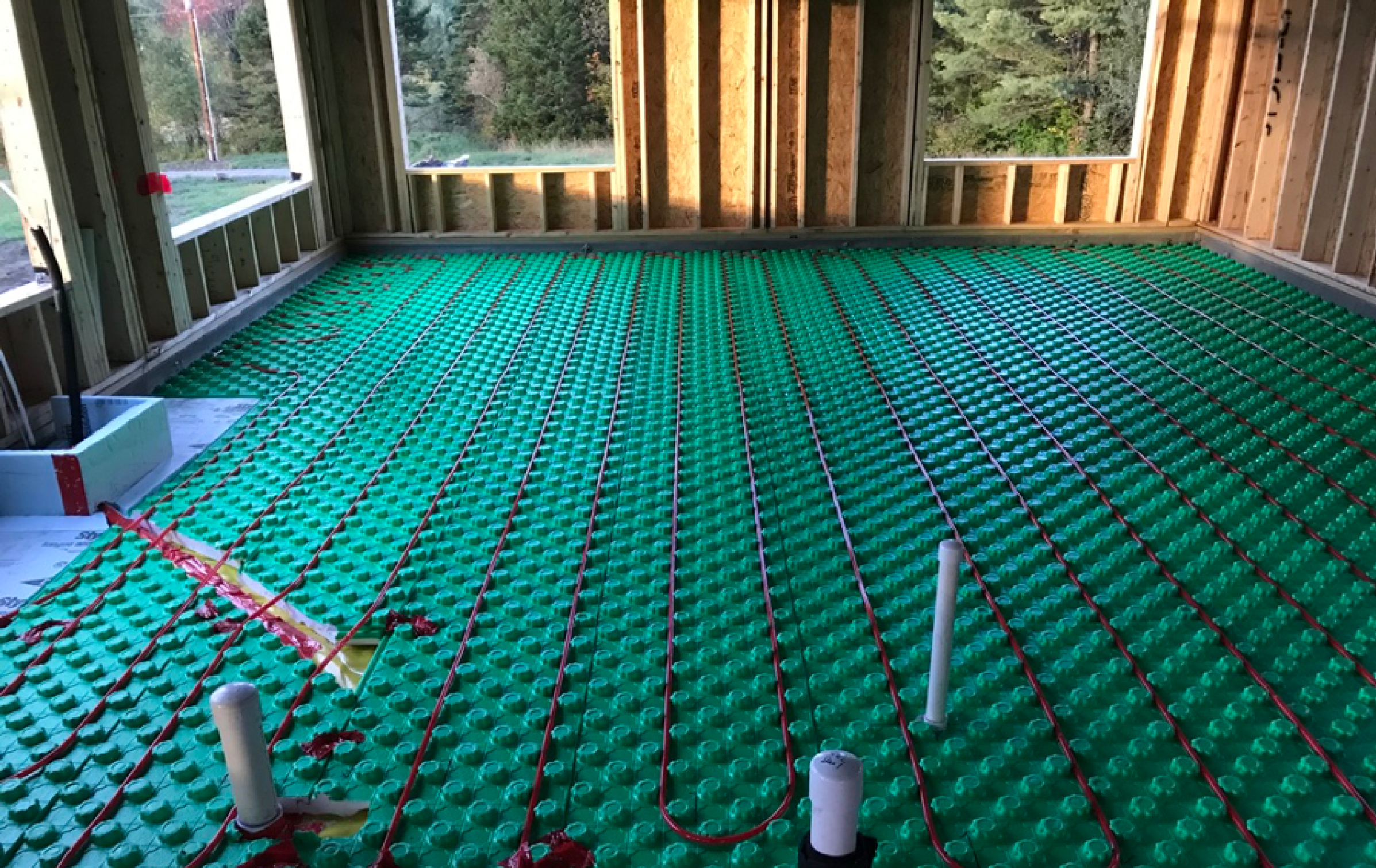
The Anatomy of a New Home Build: Part 4 - Warm Toes
Radiant floor heating in your vermont home
Radiant heat is one of the most comfortable ways to heat your Vermont home. Rather than circulating warm dry air, it warms the floor and that heat radiates up to warm the occupants, the turnings and eventually the air. Radiant require less, or no, humidification in the winter, particularly with a good HRV/ERV fresh air system installed - where forced hot air furnaces need a humidifier installed in line to keep the air at a comfortable and healthy humidity level.
It allows you to feel warm and comfortable with air temperatures typically 5-10 degrees cooler than you might need using hot air. Allied's shop is heated by a massive radiant slab and it is comfortable to work in a t-shirt in the winter in the shop with the air temperature set to 55 degrees. Lastly, it keeps typically cold to touch surfaces like tile, stone, and wood flooring closer to a human's body temperature and more comfortable to walk on.
Radiant comes in several shapes and sizes and this home has a combination of 3 separate radiant slabs and two zones of baseboard heat where radiant was impractical and cost-prohibitive to install. We chose not to use "staple up radiant in those spaces" because it is very labor and material intensive to install and becomes quite expensive and it's one benefit is a comfort but it really doesn’t provide the efficiency gains in-slab radiant does. One of the knocks on radiant is that "it's expensive!" We have found a combination of parts, pieces, and installers that when used in a slab, provides great value for the money and is no more expensive to install than baseboard heat. The long term costs, however, are reduced because of the efficiency of heating a thermal mass.

Every time you heat a unit of water for heat, that heat is delivered to the house, via radiant heat, baseboard, heat, hydro-air unit, old school cast iron radiators, etc... Then that heat is transferred to occupants, air, furnishings, etc.. and eventually it dissipates through walls, roofs, windows, etc... to the outside. (Remember your high school physics class? heat always travels to cold.) Air has a poor capacity to retain heat because it has virtually no mass. Concrete, however on the other end of the spectrum has a large mass and when you put a BTU of heat into it tends to stay there. Baseboard heat is a bit of a combo of the two with some radiation heating and some convection current heating which warms the air. We have mixed and matched different delivery systems in the home to provide comfort and efficiency in different areas.
The master suite is on a massive radiant slab. There is also a heated slab in the garage and in the basement. Those slabs alone will have enough heating capacity to heat the entire home but because of their zoning and separation from spaces, we added baseboard radiators on the second floor and main living space over the basement to ensure even heat throughout the home. Once heated up, the air and furnishings in the home will also warm-up and then the slab will slowly give off its heat as the house cools. The boiler ends up "spitting" heat into the slab to maintain it's temperature and comfort level rather than dumping it into a low mass object like the air in the home. This is where efficiency is achieved.
In the upstairs bedrooms and the living space, the baseboard radiators will supplement the heat and provide a faster delivery method that the radiant which is slow to react both to heat and to cool down. This gives the homeowners a lot of control over their comfort.
It is important to insulate the slabs well underneath and to break their thermal contact with any exterior wall surface so we use a foam separator around the slab perimeter and 4" rigid foam underneath the slab to ensure it doesn’t give its heat up to the ground below. Utilizing a product called Crete-Heat, we greatly increase the speed of the tubing installation. One person can install the tubing for a whole garage in about an hour. The final step to finishing it off is to pour the slab and hook up the boiler!
